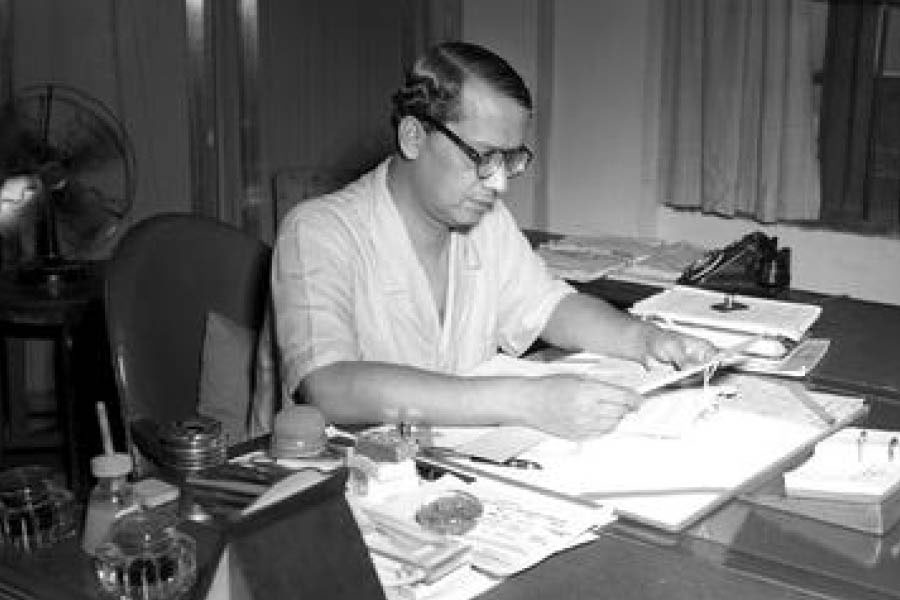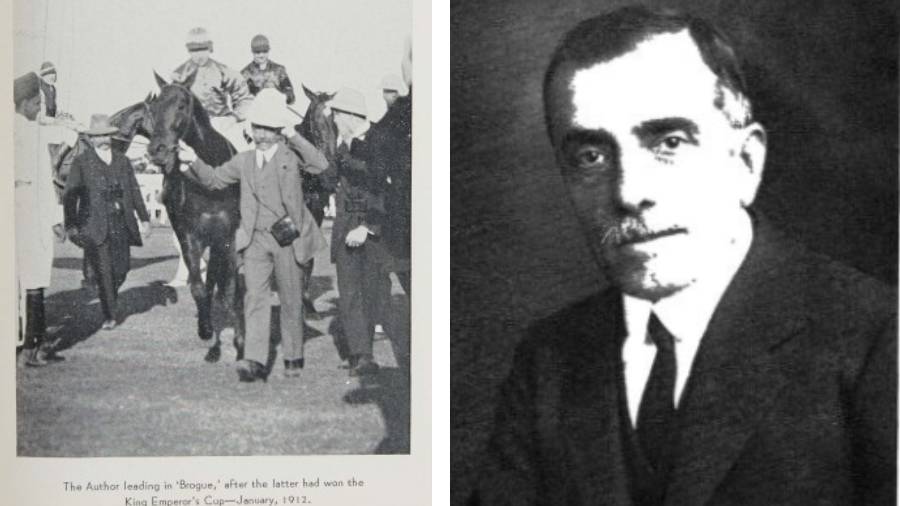On November 26, 1949, the Indian Constitution was formally adopted with the Constitution coming into effect on January 26, 1950 — the first Republic Day. The adoption of the Constitution meant that the national elections needed to be conducted to elect a democratically elected Parliament and government.
An Election Commission had been formed in 1949 and the search for a suitable candidate to head it was on. Senior Congress politician Bidhan Chandra Roy, the first chief minister of West Bengal, had someone in mind. This man was an Indian Civil Service (ICS) officer, who was then serving as the chief secretary to the West Bengal government. His name was Sukumar Sen. In March, 1950, Sen was appointed as India’s first chief election commissioner (CEC).
Sukumar Sen was born on January 2, 1899. His father, Akshoy Kumar Sen, was also a civil servant. Sen completed his graduation in mathematics from Presidency College (now University) of Calcutta (now Kolkata) and then joined University of London for further studies in the subject, where he was awarded a gold medal in mathematics. In 1921, Sen qualified for and joined the Indian Civil Service (ICS). Over the next two-and-a-half decades, Sen served all over India in various positions mainly in judiciary. In 1947, Sen was appointed the chief secretary of the West Bengal in which capacity he got acquainted with Dr BC Roy, which eventually took him to Delhi to assume office as India’s first CEC.

Dr Bidhan Chandra Roy
The challenge that Sen faced was possibly the biggest ever faced by an Indian bureaucrat. Less than a month after Sen took over as CEC, the Representation of People’s Act was passed in the Parliament. Jawaharlal Nehru, India’s first Prime Minister, expressed a desire to see elections conducted next spring, leaving the CEC with less than a year to prepare. Unlike most countries of the West, India had decided for universal Indian suffrage. The voter base, which Sen had to manage was 176 million of whom 85 per cent were illiterate (who could not read or write their names).
Just imagine: no voter lists, no identity cards, no ballot papers, ballot boxes or party symbols. Everything had to be done from the scratch. There was no polling infrastructure — polling stations, polling staff etc. And the fact that several of the states would also have their first Assembly elections complicated matters.
Sukumar Sen appreciated Pandit Nehru’s desire to have the elections conducted as soon as possible since the same would add further legitimacy to the fledgling democracy. But he also realised that ensuring the whole affair was conducted effectively had to be prioritised and for that, he needed sufficient time. Sen thus firmly pushed back Nehru’s push for an early election, focusing instead on building up the polling infrastructure. To the credit of India’s first Prime Minister and its political leadership of the time, they understood Sen’s point of view and did not interfere any further, giving Sen and his team pretty much a free hand in his work.
Aided by two regional election commissioners and the state election chiefs, Sen went about this humongous task. Possibly, the fact that he was an astute mathematician, aided Sen in planning this immense assignment perfectly to the minutest detail. Sen and his core team – all ICS officers – used their experience of handling elections in British India to good effect to pull off one of the most outstanding success stories ever as far as elections are concerned. A look at some of the facts and figures reveals the immenseness of the challenge that confronted the first CEC and his team.
A total of 1,949 candidates competed for 489 seats in the first Lok Sabha, which were allotted across 401 constituencies in 25 states. There were 314 constituencies electing one member. Eighty-six constituencies elected two members, one from the general category and one from the Scheduled Castes or Scheduled Tribes. There was one constituency with three elected representatives. Each candidate was allotted a different coloured ballot box at the polling booth, on which the candidate's name and symbol were written. Total of 16,500 clerks were appointed on a contract of six months to type and collate the electorate rolls and 3,80,000 reams of paper were used for printing the rolls.
A total of 1,96,084 polling booths were set up of which 27,527 booths were reserved for women. A total of 173,212,343 voters were registered (excluding Jammu and Kashmir) out of a population of 361,088,090 (1951 Census), making it the largest election conducted at the time. All Indian citizens over the age of 21 were eligible to vote.* Eventually, India’s first elections were held over a five-month period from October 25, 1951 to March 27, 1952 – in a total of 68 phases. The first votes of the election were cast in the tehsil of Chini in Himachal Pradesh which was the first state to vote in October, 1951, due to inclement weather during February/March when majority of the voting took place.

The Congress party under Jawaharlal Nehru (in picture) won a landslide victory in the first Lok Sabha elections, winning 364 seats with almost 45 per cent votes.
The Congress party under Jawaharlal Nehru won a landslide victory in the first Lok Sabha elections, winning 364 seats with almost 45 per cent votes. The Communist Party of India came a distant second with 16 seats and 3.3 per cent votes. The Socialist Party was third with 12 seats and 10.6 per cent votes. Nehru became India’s first democratically elected Prime Minister. CEC Sen was not done yet. He also successfully handled India’s second Lok Sabha elections in 1957. And he showed his competence when Sen’s wise decision to safely keep the ballot boxes of 1951/52 in custody served rich dividends as around Rs 45 million of the national exchequer were thus saved.
Sen’s successful handling of the first Lok Sabha elections saw him invited to Sudan to oversee that country’s first elections in 1953. Sen spent over nine months in the country – tackling a pretty similar situation to what he had faced in his own country: large voter base with low literacy and very little polling infrastructure.
Once again, Sen acquitted himself well and is honoured with a road named after him in Sudan. In recognition of Sen’s achievements, a grateful Indian government honoured him with the Padma Bhushan in 1954. In 1960, when Dr BC Roy established Burdwan University, he zoned in on Sukumar Sen as its first vice-Chancellor. A road from GT Road to Golapbagh in Burdwan (now Bardhman), named Sukumar Sen Road, is today the only remaining memory of this remarkable man.



